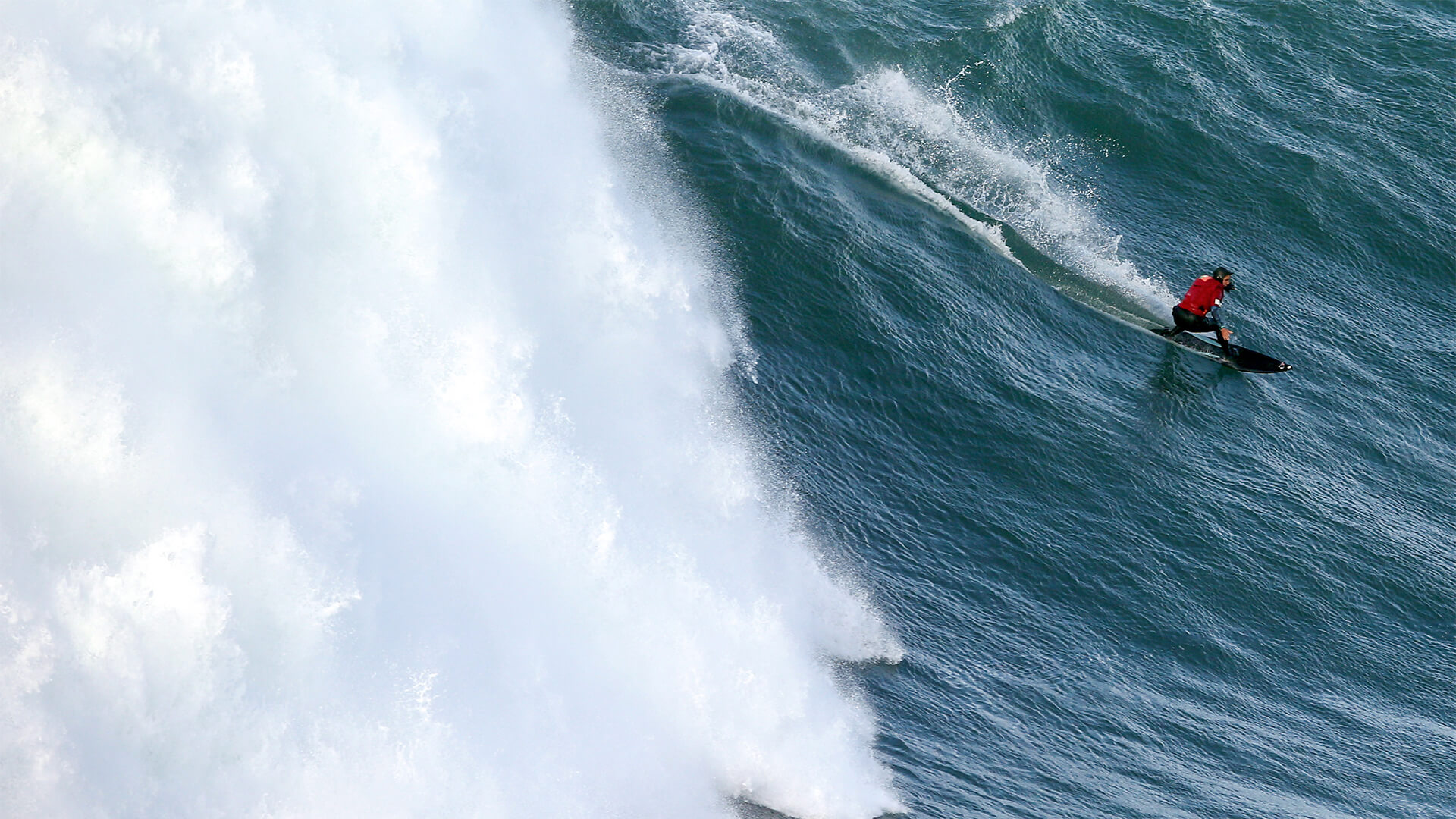The Biggest Wave
NORTH OF LISBON sits Nazaré, a Portuguese fishing town known for the biggest waves in the world. It was here, in a place where the ocean can portend death, that professional surfer Maya Gabeira surfed a world-record breaking wave in February 2020. How big was it? The answer took a team of experts including Adam Fincham, adjunct research associate professor in the USC Viterbi Department of Aerospace and Mechanical Engineering, weeks to determine.
Traditionally, wave height is measured arcanely, with a ruler. But when Gabeira and fellow competitor Justine Dupont each shared footage claiming she had surfed the biggest wave of the year, the World Surfing League knew a more technical approach would be required. The WSL called in fluid mechanics and oceanography experts to help. Employing a variety of technical tools and equations, from crest to trough, the team estimated Gabeira’s wave at 73.5 feet and Dupont’s wave just two to three feet shorter.
Engineering Waves
Fincham, who describes himself as an amateur surfer, has spent much of his career focused on fluid mechanics. When he lived in France, he was exposed to various laboratories using different wave technologies and experimental methods of measurement.
In 2006, he began working with professional surfer Kelly Slater to create the perfect wave. Slater’s company, the Kelly Slater Wave Company (WaveCo), has since become a part of WSL, which hosted the Nazaré Tow Surfing contest that Gabeira dominated. When the question of wave size was posed, the WSL approached WaveCo to see if it could help.
A Forensics Approach to Wave Measurement
“We began our work sometime in June,” said Fincham, who is chief scientist at WaveCo. “I wasn’t at the event, and I didn’t have the luxury of taking my own photographs or arranging a particular camera setup to make measurements.” He also did not know the exact locations of the cameras or photographers on whose footage he would have to rely.
To ensure credibility of WaveCo’s approach, Fincham said it was important to assemble a panel of experts, including surf industry insiders from WSL and fluid dynamic experts from the Scripps Institute of Oceanography and USC Viterbi.
Like archeologists, they put together clues from the past, including metadata from photographers about which lenses and angles they used and model information about the Jet Skis that were on the scene. They estimated the height of each wave using equations that measure the size of known objects, such as the Jet Ski or the surfers themselves. The same procedure was applied to both waves in question, as well as to the wave that previously set the world record, also by Gabeira — 68 feet. They also looked at environmental conditions like sunlight and shadows.
Given the limitations of the information they had, Fincham said it was hard to get closer than plus or minus two feet in wave height. But while the exact number might still be open to interpretation, it was clear Gabeira, not Dupont, rode the bigger wave.
The Future of Competition
Over the past 10 to 15 years, Fincham has gained an appreciation for the sport of surfing. “I know what qualifies a wave to be a good surfing wave,” he said. Anything bigger than 8 to 10 feet, he explained, becomes dangerous for amateurs. More than the barrel, the form, speed and angle of the wave come into play.
Given that wave size is one of the most important metrics in judging a big wave surfing contest, he hopes the way that waves are measured will change. “Going forward, we will be proposing deployment of our specific camera at a set location, with lenses set a various, specific angles, and maybe even a LIDAR that could accurately measure at least the crest of the wave,” Fincham said. “This would be revolutionary in the field, particularly for large waves with a very close break.”




